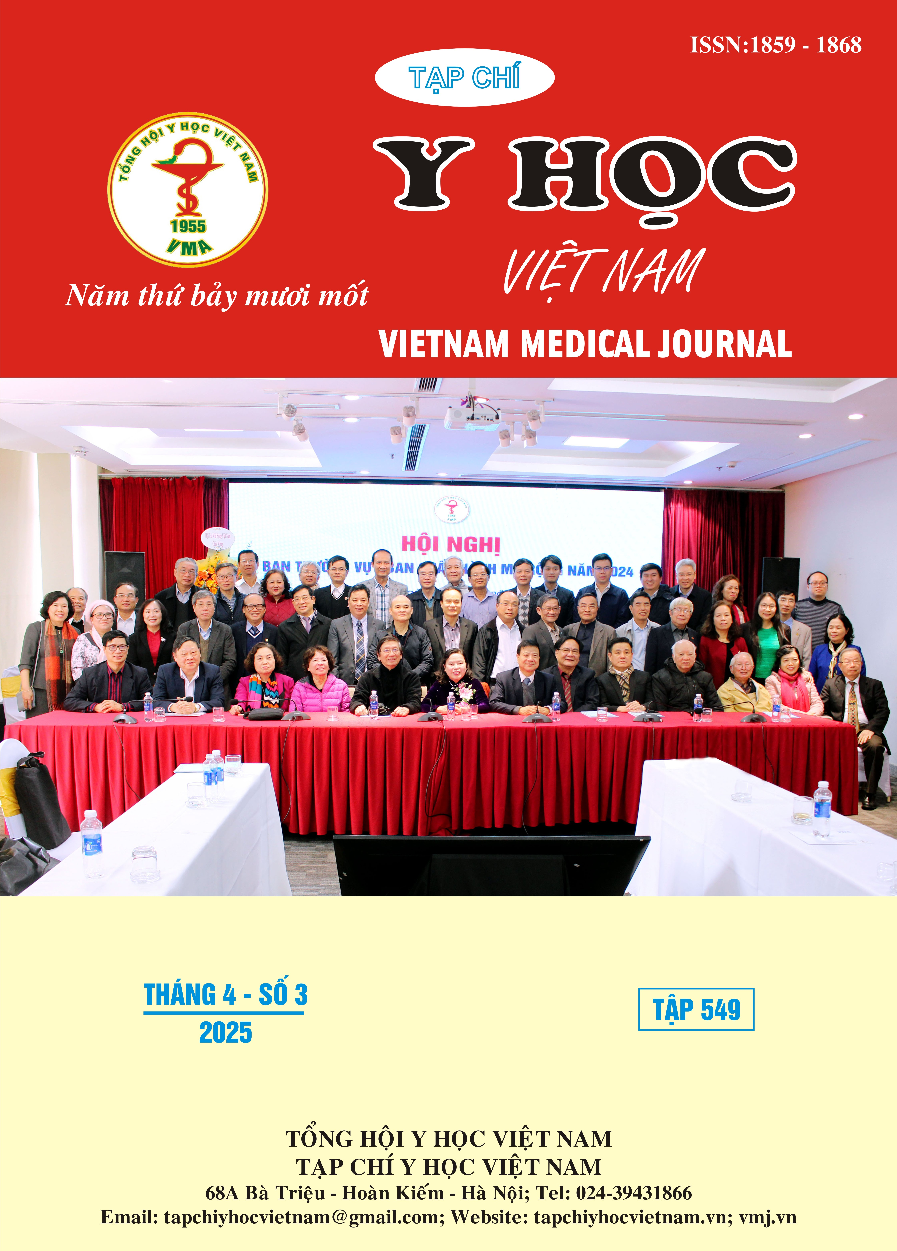DIAGNOSIS AND TREATMENT PRIMARY CUSTANEOUS LYMPHOMA IN NATIONAL INSTITUTE HEMATOLOGY AND BLOOD TRANFUSION FOR 2017-6/2024
Main Article Content
Abstract
group of lymphoproliferative diseases, with lymphoproliferative disease that may be confined to the skin without involvement of lymph nodes, bone marrow, or viscera. diagnose. Skin lymphoma can originate from mature T lymphocytes, mature B lymphocytes, or NK cells. Histopathological evaluation including immunohistochemical staining of skin biopsies is the basis of diagnosis, and to date, the treatment of the disease, especially in advanced stages, remains a lot of challenging. Objective: To investigate the characteristics of diagnosis and treatment of primary cutaneous lymphoma at the National Institute of Hematology and Blood Transfusion. Subjects: 58 primary cutaneous lymphoma patients treated at NIHBT from 2017- 6/2024. Methods: Retrospective, descriptive, prospective study. Result: Among the 58 patients included in the study, 79,3% were transferred from Dermatology, while 20,7% came from oncology center. The average time to diagnosis was 19,36 months (ranging from 1 month to 23 years). The mean age of the patients was 50 years (ranging from 7 months to 89 years), with a male-to-female ratio of 1,3:1. All patients (100%) were diagnosed through skin biopsy, with the most common skin lesions being patches and papules (41,4%), followed by nodules (36,2%), tumors (13,8%), and skin ulcers (34,5%). Approximately 25,9% of patients presented with enlarged lymph nodes, and 13.8% had bone marrow infiltration. Among the 44 patients tested, 30,4% were CD30 (+). There were 54 patients with T-cell origin (93,1%), while only 4 patients had B-cell origin (6,9%). Among the 54 patients with T-cell lymphoma, Mycosis fungoides accounted for 29,6%, ALCL CD30 (+) for 5,6%, subcutaneous panniculitis-like T-cell lymphoma for 18,5%, Gamma delta T-cell lymphoma for 3,7%, and peripheral T-cell lymphoma, not otherwise specified (NOS) for 42,6%. In the study group, 56 patients received treatment, with 96,6% undergoing systemic chemotherapy. The treatment regimens included CHOP, CHOPE, CHOPE + lenalidomide, R-CHOP, EPOCH, CVP, GDP, ICE, oral methotrexate, Brentuximab (Adcetris), and pembrolizumab (Keytruda). One patient underwent autologous stem cell transplantation as consolidation after chemotherapy. As of August 2024, 46,5% of the patients had died, 48,3% were still alive, and 5,2% (3 patients) were lost to follow-up. Among the 28 patients who were still alive, 22 patients (78,6%) achieved complete or partial remission, while 6 patients (21,4%) had disease progression. For the 27 patients who died, the average time from diagnosis to death was 46,3 months (ranging from 2 months to 25 years). Conclusion: Patients with primary cutaneous lymphoma are mainly detected from dermatological facilities through skin biopsies, diagnosis and treatment are still a lot of challenging.
Article Details
Keywords
Primary cutaneous lymphoma, Brentuximab
References
2. Stoll J.R., Willner J., Oh Y., et al. (2021). Primary cutaneous T-cell lymphomas other than mycosis fungoides and Sézary syndrome. Part I: Clinical and histologic features and diagnosis. Journal of the American Academy of Dermatology, 85(5), 1073–1090.
3. Sanctis V.D., Osti M.F., Berardi F., et al. (2007). Primary Cutaneous Lymphoma: Local Control and Survival in Patients Treated with Radiotherapy. ANTICANCER RESEARCH.
4. Battistella M., Sallé De Chou C., De Bazelaire C., et al. (2016). Lymph node image-guided core-needle biopsy for cutaneous T-cell lymphoma staging. Br J Dermatol, 175(6), 1397–1400.
5. Tadiotto Cicogna G., Ferranti M., and Alaibac M. (2020). Diagnostic Workup of Primary Cutaneous B Cell Lymphomas: A Clinician’s Approach. Front Oncol, 10, 988.
6. Sreedharanunni S., Sachdeva M., Radotra B., et al. (2014). Primary cutaneous T cell lymphoma with bone marrow infiltration and erythroblastopenia – A rare association. Hematology/Oncology and Stem Cell Therapy, 7.
7. Sokołowska-Wojdyło M., Olek-Hrab K., and Ruckemann-Dziurdzińska K. (2015). Primary cutaneous lymphomas: diagnosis and treatment. Postepy Dermatol Alergol, 32(5), 368–383.
8. Willemze R., Cerroni L., Kempf W., et al. (2019). The 2018 update of the WHO-EORTC classification for primary cutaneous lymphomas. Blood, 133(16), 1703–1714.
9. Willemze R., Jaffe E.S., Burg G., et al. (2005). WHO-EORTC classification for cutaneous lymphomas. Blood, 105(10), 3768–3785.


